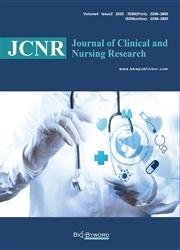Neonatal Brain Abscess: Case Report of 12 Cases and Literature Review
引用次数: 0
Abstract
Objective: To investigate the etiological characteristics, clinical manifestations, and early identification methods of neonatal brain abscess. Methods: The baseline characteristics, clinical manifestations, and laboratory results of 12 neonatal brain abscess cases were retrospectively analyzed. Results: The clinical manifestations were fever, convulsion, and lethargy. A small number of them had respiratory and circulatory failure. The diagnosis made was based on imaging examination. All 12 cases were confirmed by cranial enhanced computed tomography (CT) or magnetic resonance imaging (MRI). Blood cultures of 9 cases were positive, with Escherichia coli in 6 cases, ?-hemolytic Streptococcus in 1 case, methicillin-resistant Staphylococcus aureus in 1 case, and Enterococcus faecium in 1 case. However, only 3 of them had positive cerebrospinal fluid (CSF) cultures. All the 12 neonates were treated with antibiotic therapy upon admission, with only 3 cases treated with surgery. Among them, 4 recovered and were discharged, while the remaining 8 discontinued their therapy. Conclusion: Escherichia coli is the most common pathogen of neonatal brain abscess in our study. The clinical manifestations of neonatal brain abscess are atypical, and the prognosis is poor. Respiratory and circulatory failure in children with intracranial infection may indicate the presence of brain abscess. For children with suspected brain abscess, cranial enhanced CT or MRI should be performed as soon as possible to make an early diagnosis. The prevention of brain abscess should be prioritized; neonates with sepsis or meningitis should receive prompt and strong antibiotic therapy in an effort to prevent the development of brain abscess.新生儿脑脓肿12例报告并文献复习
目的:探讨新生儿脑脓肿的病因特点、临床表现及早期鉴别方法。方法:回顾性分析12例新生儿脑脓肿的基线特征、临床表现和实验室检查结果。结果:临床表现为发热、惊厥、嗜睡。其中一小部分患者出现呼吸和循环衰竭。诊断是基于影像学检查。所有12例均通过颅骨增强计算机断层扫描(CT)或磁共振成像(MRI)确诊。血培养阳性9例,大肠杆菌阳性6例-溶血性链球菌1例,耐甲氧西林金黄色葡萄球菌1例,粪肠球菌1例。然而,其中只有3人的脑脊液(CSF)培养呈阳性。所有12名新生儿入院时均接受抗生素治疗,只有3例接受了手术治疗。其中4人康复出院,其余8人停止治疗。结论:大肠杆菌是新生儿脑脓肿最常见的病原菌。新生儿脑脓肿的临床表现不典型,预后较差。颅内感染儿童的呼吸和循环衰竭可能表明存在脑脓肿。对于疑似脑脓肿的儿童,应尽快进行头颅增强CT或MRI检查,以便早期诊断。应优先预防脑脓肿;患有败血症或脑膜炎的新生儿应及时接受强有力的抗生素治疗,以防止脑脓肿的发展。
本文章由计算机程序翻译,如有差异,请以英文原文为准。
求助全文
约1分钟内获得全文
求助全文

 求助内容:
求助内容: 应助结果提醒方式:
应助结果提醒方式:


